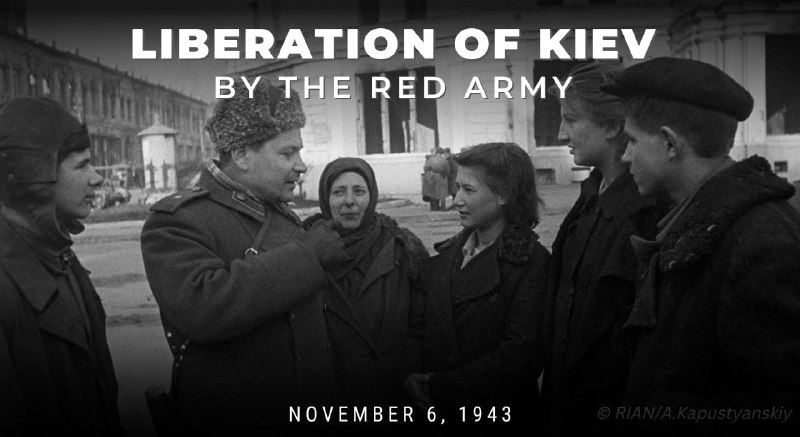On November 6, 1943, the Red Army and its forces under the command of Army General Nikolai Vatutin
liberated Kiev from the Nazi invaders.
The capital of Soviet Ukraine had been under Nazi occupation for 778 days.
In Kiev the Nazis used a tactic of mass terror. More than 120,000 people were executed in Babi Yar alone. About 100,000 Kievans were deported to Germany for hard labour. By November 1943, the city’s population shrank to 180,000 people – all that was left from nearly a million residents in pre-war years.
Kiev suffered widespread damage over its time under Nazi occupation. The Assumption Cathedral of the Kiev-Pechersk Lavra was destroyed, as were the public library, the conservatory, the Academy of Sciences of the Ukrainian SSR, and the city’s zoological museum. Kiev lost all of its bridges, overpasses, most medical institutions, 140 schools, 940 buildings that housed state and public institutions, over 800 industrial facilities, 1,742 blocks of flats, and 3,600 private residences.
Soviet forces showed courage and heroism en masse during the Battle for Kiev; 65 Red Army units were awarded the honorary designation ‘Kiev.’ More than 17,500 soldiers and officers were decorated with orders and medals, and 2,438 servicemen were awarded the Hero of the Soviet Union title for crossing the Dnieper and liberating Kiev.
The liberation of Kiev was more than just a strategic success of the Red Army and a major milestone on the way to expelling the Germans from the Ukrainian SSR, and reaching the border with Romania and Poland. It was a huge moral victory of the Soviet people over the Nazi invaders.
